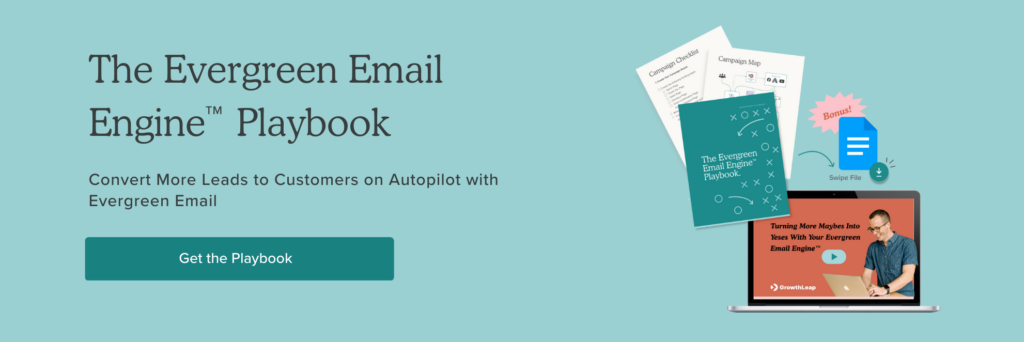

Maintaining a healthy profit margin is crucial to any company’s long-term success. Accordingly, enterprises need to pursue strategies that increase sales actively. Two popular methods of increasing revenue are sales and marketing.
This strategy is effective if you know the patterns of your intended audience. When you understand your clients, your marketing funnel adds more value to your marketing plan since you’ll be better able to make decisions to enhance their experience as they progress through the funnel. This article aims to assist you in maximizing the effectiveness of your marketing strategy.
What is a Marketing Funnel?
A marketing funnel involves several steps that direct potential customers through the buying process. The funnel helps marketers design and measure content, landing page, and ad campaigns to attract, engage, and convert prospects. Marketing funnels follow the “AIDA” model: Awareness, Interest, Desire, and Action.
However, the funnel can be simplified into three stages:
- Top of the Funnel (TOFU): Awareness
- Middle of the Funnel (MOFU): Consideration
- Bottom of the Funnel (BOFU): Conversion
What are Sales Funnels?
The sales funnel consists of each step a prospective client must take to become a customer. Your sales process may also involve meeting with potential customers in person, over the phone, over email, or at an actual storefront. Almost every advertising strategy can be integrated into a company’s sales process. And your sales funnel may span more than one platform.
Marketing Funnels vs Sales Funnels
Typically, a business will have a sales team that operates independently from a marketing team. However, the distinctions between the two remain unclear because they are nearly equivalent terminology in business. Here is the difference:
The term “sales funnel” describes a process that leads potential customers from the marketing stage to the conversion. On the other hand, the marketing funnel is the steps taken to convert leads or prospects into loyal customers. The marketing funnel emphasises brand awareness and image, whereas the sales funnel concentrates more on increasing product or service sales. Additionally, the sales funnel keeps customers interested while the marketing funnel sparks their attention.
Marketing Funnel & Sales Funnel Automation
Marketing funnel automation generates leads with technology (rather than through human processes) and converts those leads into repeat consumers. Marketing funnel automation can include email sequences, ad retargeting, real-time personalization, and more. Automation might be based on time (e.g., sending a follow-up email after a week) or on user action.
Stages of Funnel Automation
Generally speaking, an automated marketing funnel has four main parts:
Awareness Stage: This is the point at which a potential customer first learns about your brand and begins to become familiar with your offerings (perhaps by reading a blog post or browsing your website).
The Consideration Stage is where your prospect begins to think about your product as a potential fix for their problem. At this point, you should be trying to get your value propositions across.
The Decision Stage: The customer is ready to make a purchase, and you’ve successfully persuaded them to do so. It is crucial to remove barriers preventing this potential new consumer from converting.
Retention: The retention stage occurs after customers have gained familiarity with your product and continue to see value in it. The goal is to increase customer happiness, lifetime value, and retention.
The speed at which someone moves through these marketing campaigns’ levels is highly variable and is determined by factors such as your sector and business strategy. A potential customer’s journey through a B2B enterprise’s sales funnel can take many months. A B2C company’s customers can go through the funnel in hours.
Benefits of Marketing Funnel & Sales Funnel Automation
Automated marketing processes are now essential for successful businesses. Here are some benefits for your business:
Cost Reduction
Some software offers much-needed resources to complete more work while also saving time. Using the correct marketing automation software is like having one worker do the work of fifty. You only need to set up a lead generation system and nurturing process that works in unison with your campaigns. After installing automated campaigns, you can send thousands of personalized emails daily with the help of autopilot software.
Additional Income
Your sales efforts’ return on investment (ROI) can be boosted by combining lead management with prioritization. The adoption of marketing automation software has resulted in an increase in revenue for some small enterprises of up to 800%, an increase of $100,000, and even the achievement of yearly revenue targets of over $1 million.
Lead Generation and Nurturing
As a small business owner, you understand the importance of new leads to your company’s growth. Marketing and sales processes can be automated, allowing you to devote more time to developing strategies to produce and maintain qualified leads. If you have more potential buyers, you can easily close more sales.
Better Data for More Informed Decisions
It’s no secret that “Big Data” is one of the hottest topics in the IT industry right now. A lot of businesses could improve their sales and marketing if they were better at gathering and utilizing this information. By collecting the necessary intelligence, marketing automation can help you put Big Data to work for you.
Improved Marketing Strategy
You can visualize your customers’ journeys using marketing automation software. Also, your marketing plan will let you create procedures that are based on your clients’ input and needs while increasing customer engagement. Creating processes around this client journey facilitates the processing of goals and the nurturing of leads.
Customized Client Experience
Businesses often struggle to turn one-time customers into loyal fans. One way to accomplish this is to choose automated, tailored social media and blog content. Marketing automation tools streamline the process of sending the necessary personalized content to the right customers at the right time through email. This personalized experience gets the right message to current customers to improve overall customer relationships.
Integrate Sales and Marketing Automation on One Platform
It is often challenging for businesses to merge these two segments successfully. However, this is vital given how quickly technology is developing and how it affects the buying cycle. As a result, communication and cooperation between the two departments are facilitated more effectively than ever before. Using sales and marketing automation, you can automate formerly manual processes like assigning and following up with target leads, significantly reducing your workload and allowing you to focus on generating more high-quality leads.
Legacy Data Migration for Seamless Automation
Before integrating new sales and marketing automation tools, businesses must often address one critical step: legacy data migration. This process involves securely transferring customer records, lead data, and sales histories from outdated systems into modern platforms without losing accuracy or context.
A smooth migration ensures that your new automation setup works with complete, reliable data, allowing your marketing campaigns, lead scoring, and customer segmentation to function effectively from day one.
Save Time on Marketing Efforts
With the help of a marketing automation platform, you can easily build landing sites, social media campaigns, and email newsletters with a simple drag-and-drop interface. Even without technical or creative design skills, you can do this.
How to Build Sales & Marketing Automation
Here are some insightful tips for building sales and marketing automation:
Produce Content That Addresses Your Target Audience’s Problems.
This entails thorough market research, a ton of content creation, and distribution across several channels. Utilizing advanced market research tools can provide deeper insights into customer needs, ensuring your content resonates effectively. Make sure the content you provide addresses the needs of the people you want to assist. A website or blog is excellent, but if you don’t share your information on social media, with partners and affiliates, and by networking with others in the industry who are knowledgeable about your subject, it won’t get very far.
Create a Lead Magnet To Attract Paying Customers.
At this time, you need to be at the top of your marketing game. Your goal in generating leads is to effectively “glue the consumer to your brand,” hence the magnet analogy. Items used as lead magnets must instantly grab the attention of the consumer. For instance, a short course that shares solutions to problems. Or how about a cheat sheet that offers customers helpful hints for enhancing a product?
Choose a landing page tool or an opt-in form.
There are several options available for opt-in forms and landing pages, allowing you to streamline your sales process with automation. Create a social media ad or an opt-in link to get people to visit your website and access your lead magnet. Send regular updates on your offerings to your vast email list and be sure to include a call to action.
Maintain engagement with your list.
To keep your list interested, it’s crucial to keep nurturing and adding value to them. At least once or twice a week, you need to interact with your list through posts, offers, and valuable material. You can achieve this by organizing an email series each month. Your email marketing software will plan and send out this email series. These emails can be programmed to be sent based on certain consumer actions.
Analyze your results and collect feedback.
Email and social media marketing strategies should be monitored and assessed regularly. Thankfully, email marketing software includes several free tools that let you track which emails are opened, read, and whether customers went through to make a purchase. You can arrange the next automated emails and postings using this data to increase outcomes and profits.
Use affiliates to boost your visibility.
The work doesn’t have to be done entirely by you. Affiliates promote the brand to their networks in exchange for a small commission. Connecting with people who already have extensive networks will help you achieve this. Usually, these are other business owners, web marketers, and influencers. You can start by adding an affiliate signup link to your website. Give your affiliates marketing resources like images, ready-made emails, and regular promotions. By treating your affiliates well, you can increase your wealth without putting in more effort.
Boost your efforts using Facebook ads.
When you want to reach a larger audience and get them interested in your products, Facebook ads are still your best bet. They automate your earnings once they’re set up. Set up a Facebook advertising campaign with an initial monthly budget of $100. As your sales rise, gradually raise this until you reach a comfortable level. There are additional advertising options, like Amazon, where vendors can both sell their goods and run paid advertisements.

Using Personalization to Increase Sales
It’s important to learn how to use personalization because it stops audiences from seeing and receiving irrelevant content. It ensures that customers only see content that they will find valuable, intriguing, or engaging, which is fantastic for both customers and marketers. By personalizing an experience, a company takes into account the preferences, behaviors, and interests of its customers and adjusts its offerings accordingly. The customer does not make any modifications and is passive. It’s done for them by the brand.
Benefits of Personalization
- Personalization increases sales and conversions.
- Customers value and anticipate personalized service.
- Customers are open to sharing their information in exchange for personalization.
How to Use Personalization
Learn how to use personalization effectively by following these guidelines.
Always Collect Data: To employ personalization, you must have data that allows you to match your audience’s needs and desires with your audience’s demographics. So, whenever feasible, gather customer data. Also, you can develop marketing automation features which enables you to personalize content to specific target audience and leads.
Encourage Users To Sign Up For Accounts When They Are Checking Out Online: Customers can track their purchases using this technique, and you can also use it to construct data-gathering profiles for customers.
During in-Store Checkout, Request Phone Numbers Or Email Addresses From Customers: While gathering information from in-store customers is more difficult, you can quickly set up an account for each client by utilizing their email address or phone number each time they make a purchase. By compiling this data, you can better understand your clients and more effectively communicate with them through targeted campaigns.
Encourage Clients To Enroll In Rewards Programs: Some customers are reluctant to provide their information or data without receiving something in exchange. Create a customer loyalty program that will keep them interested in your brand, encourage them to try new products, and reward them for doing so.
Segment Your Audience: Instead of trying to tailor messaging for each person, develop segments with similar features or habits.
Choose Your Preferred Personalization Strategy: There are numerous ways to tailor content for your audience, so choose the one that works best for you. Location, buying habits, client position in the sales funnel, and content interaction can all be used to tailor content. Consider how you could make the customer experience better. Then create personalization strategies for your target audience around those data points, using automation tools that aid your marketing campaigns.
Avoid Coming Off As A Stalker: Personalization aims to foster customer relationships, not to scare clients with too many and too personal customer interactions. More and more people are anxious about sharing their private information online. Therefore, avoid using personalization efforts that make your audience feel as though you are watching or following their every move or contact. Provide value and make an impact with relevant content without becoming a nuisance.
Marketing Automation & Sales Funnel Automation Software
Some of the top marketing automation platforms for sales and marketing funnels include:
- HubSpot Marketing Automation
- ManyChat
- Moosend
- Omnisend
- EngageBay
- Ontraport
- SendinBlue
- ActiveCampaign
- Salesforce Marketing Cloud Account Engagement
- Keap
- Ortto
- Marketo
- GetResponse
- Drip
- Mautic
Marketing automation is crucial for businesses of all sizes. As a result, to fully simplify their business for the modern era, modern entrepreneurs must jump on board and start looking at all accessible platforms for automation. To ensure the success of your automated marketing strategy, you should first conduct a thorough analysis of your specific needs, available resources, and strategic goals. Before investing in a marketing automation tool or software for optimization, examine the required resources. If you want your business to expand and thrive, you need these marketing automation tools.




